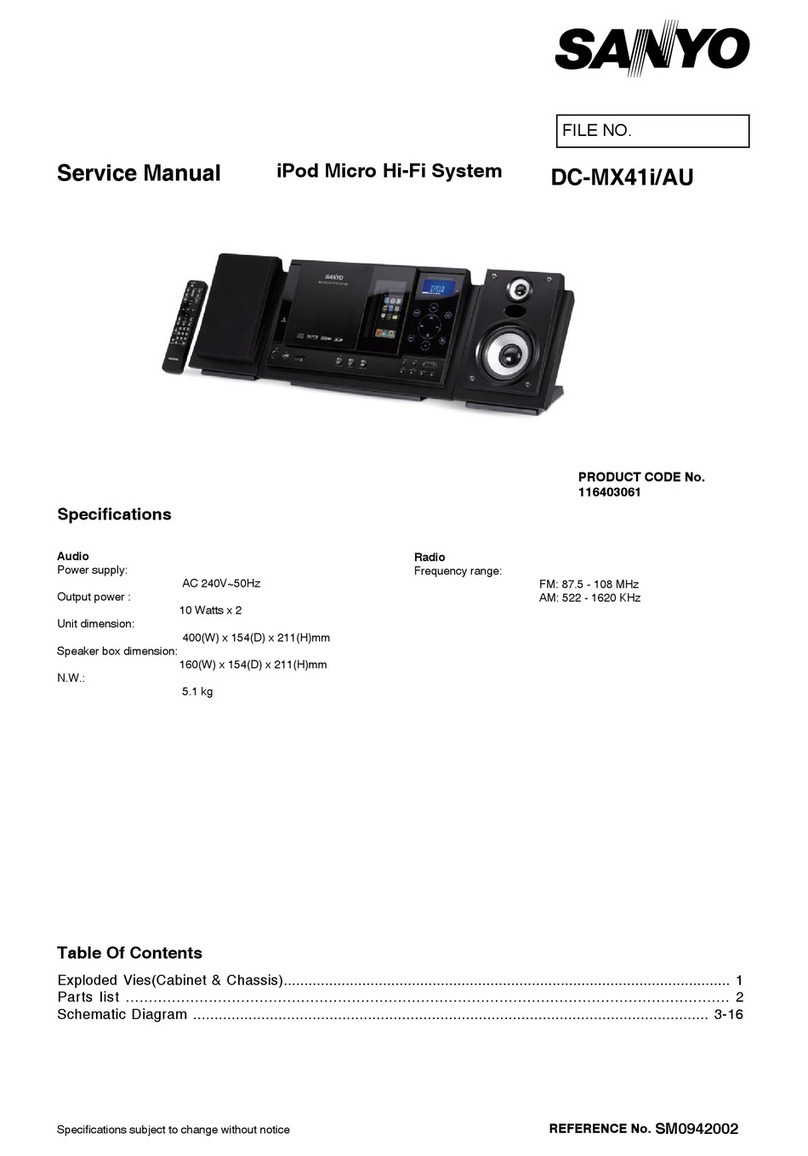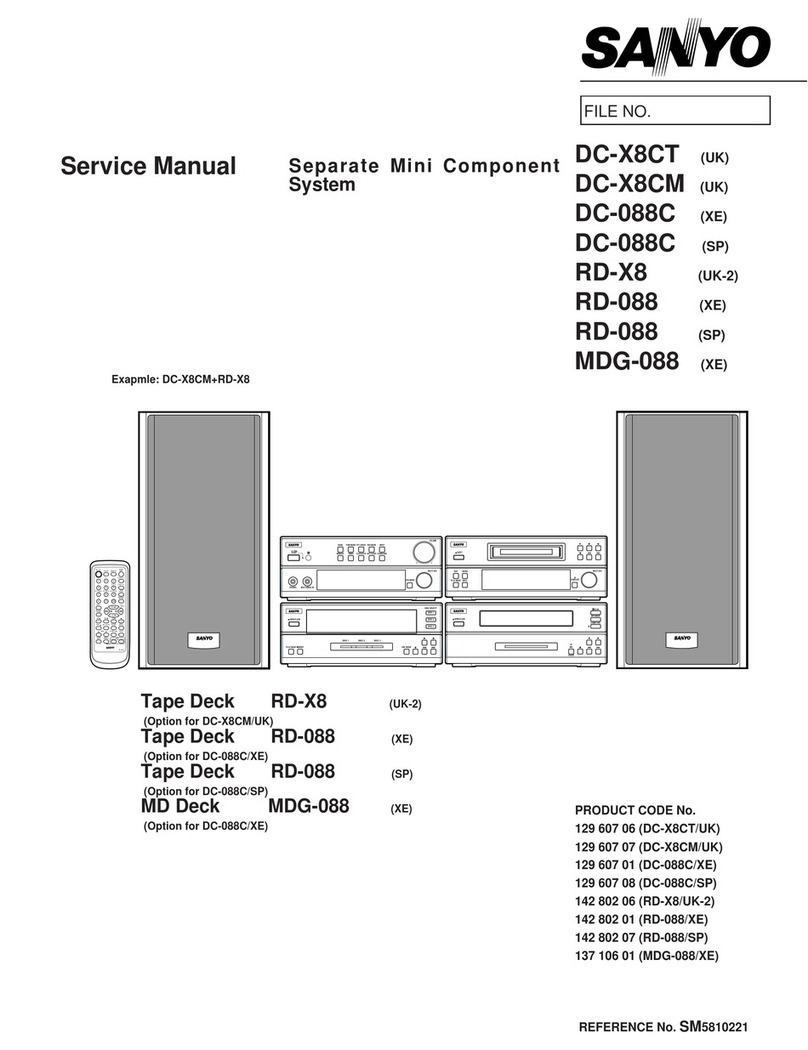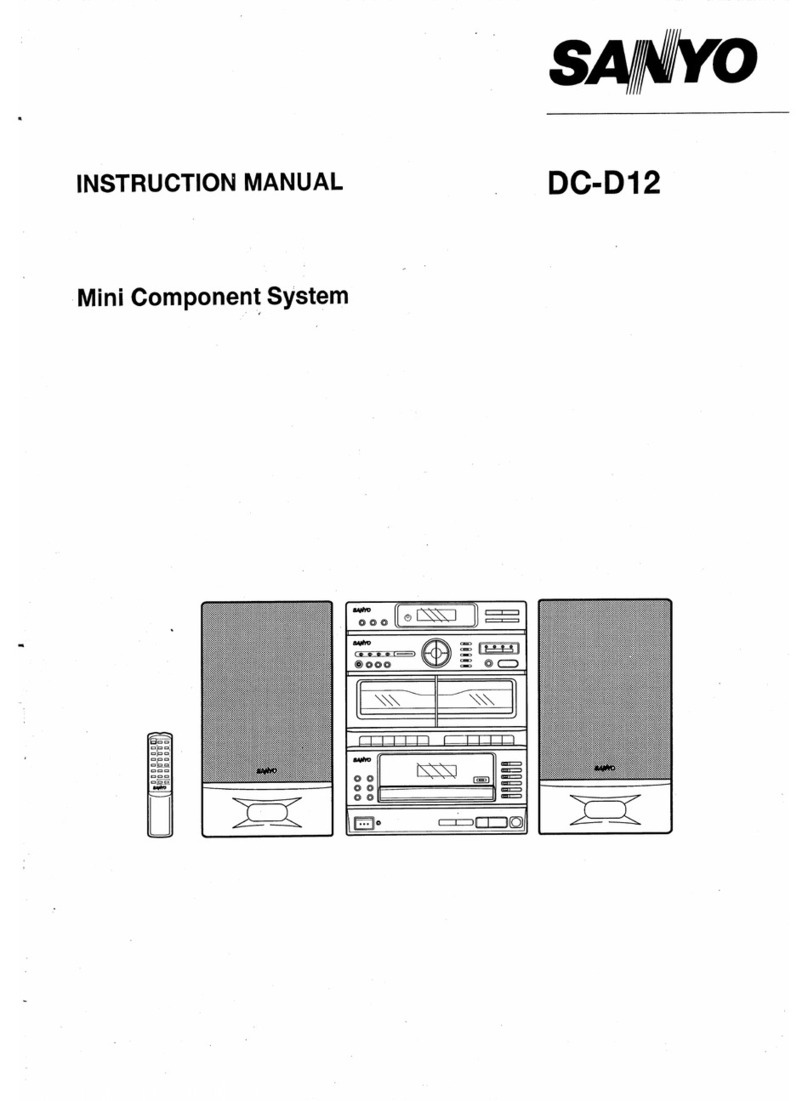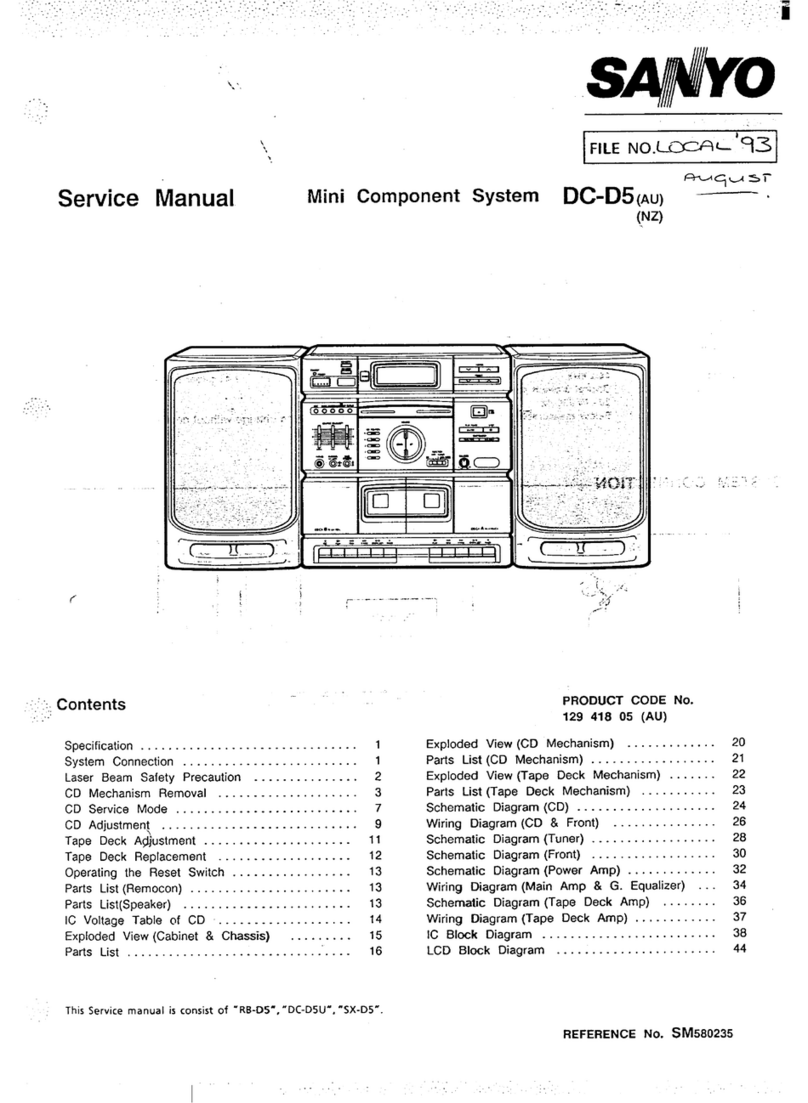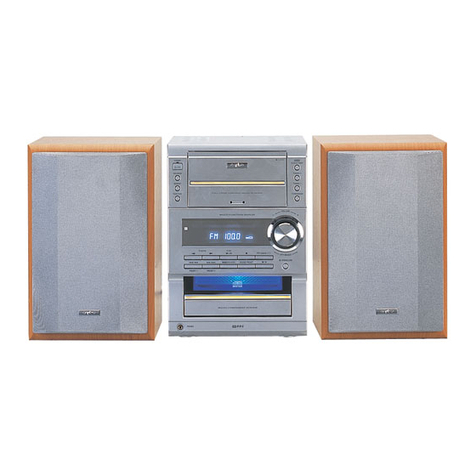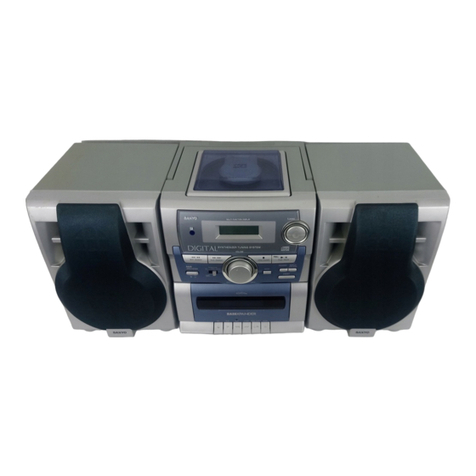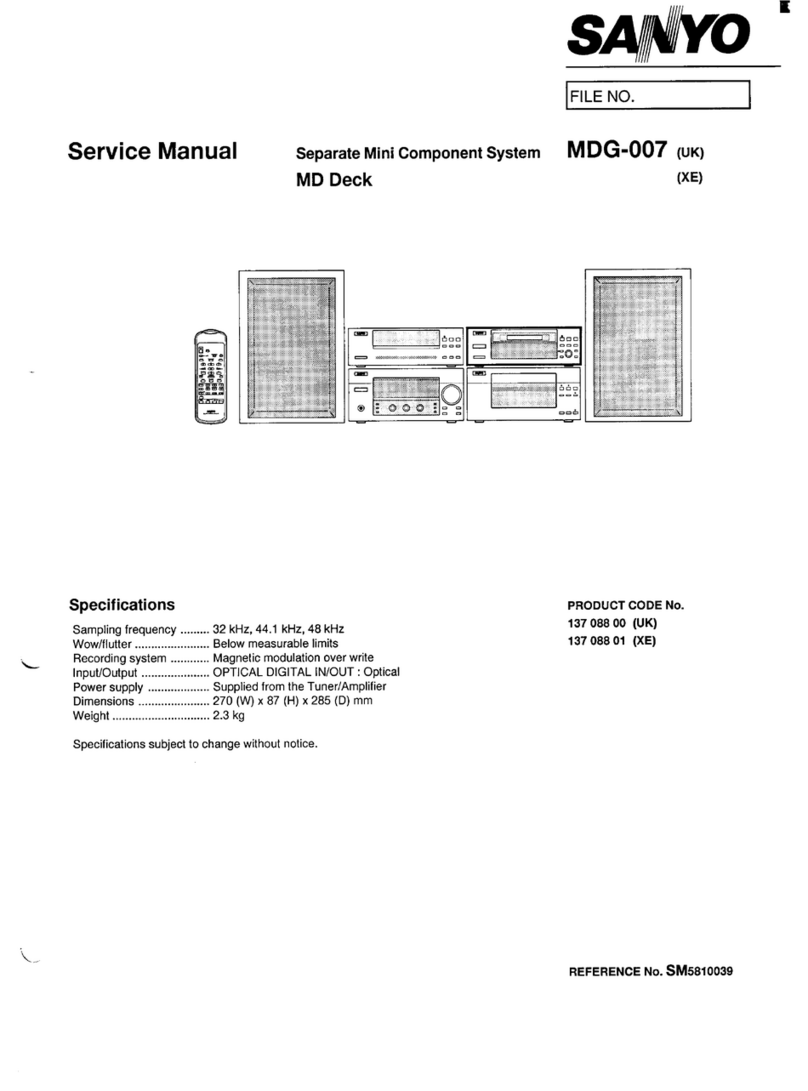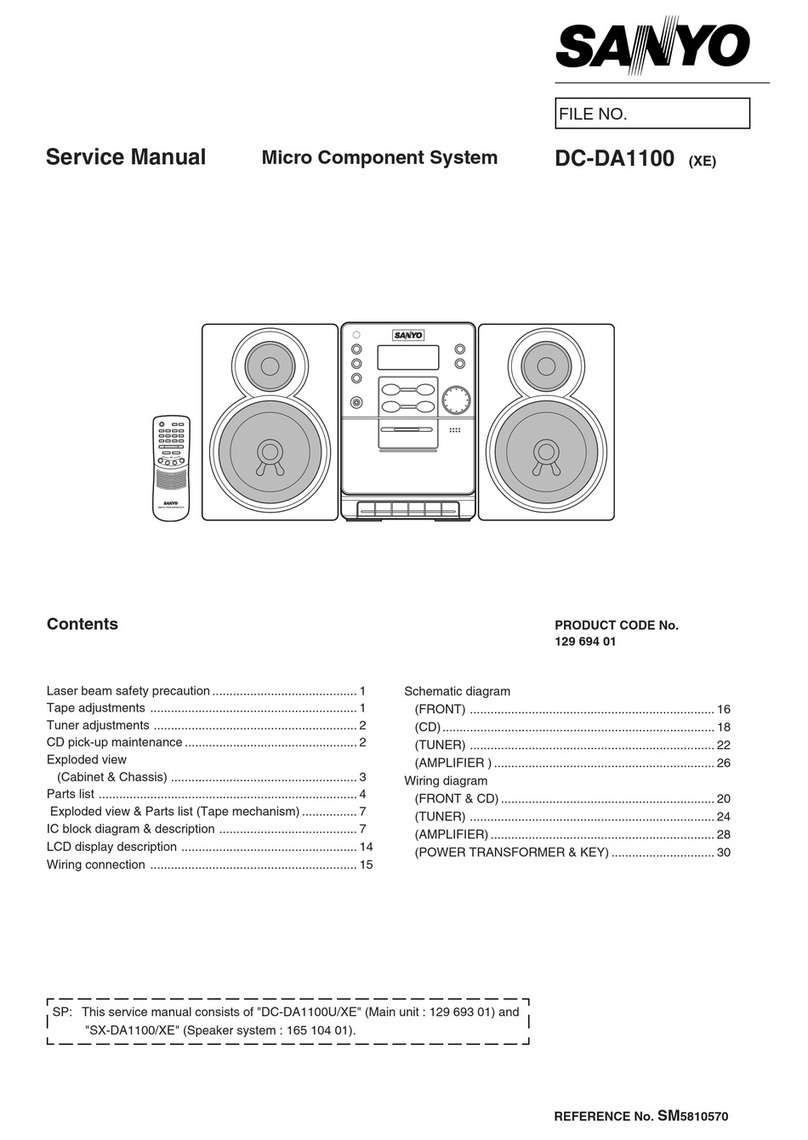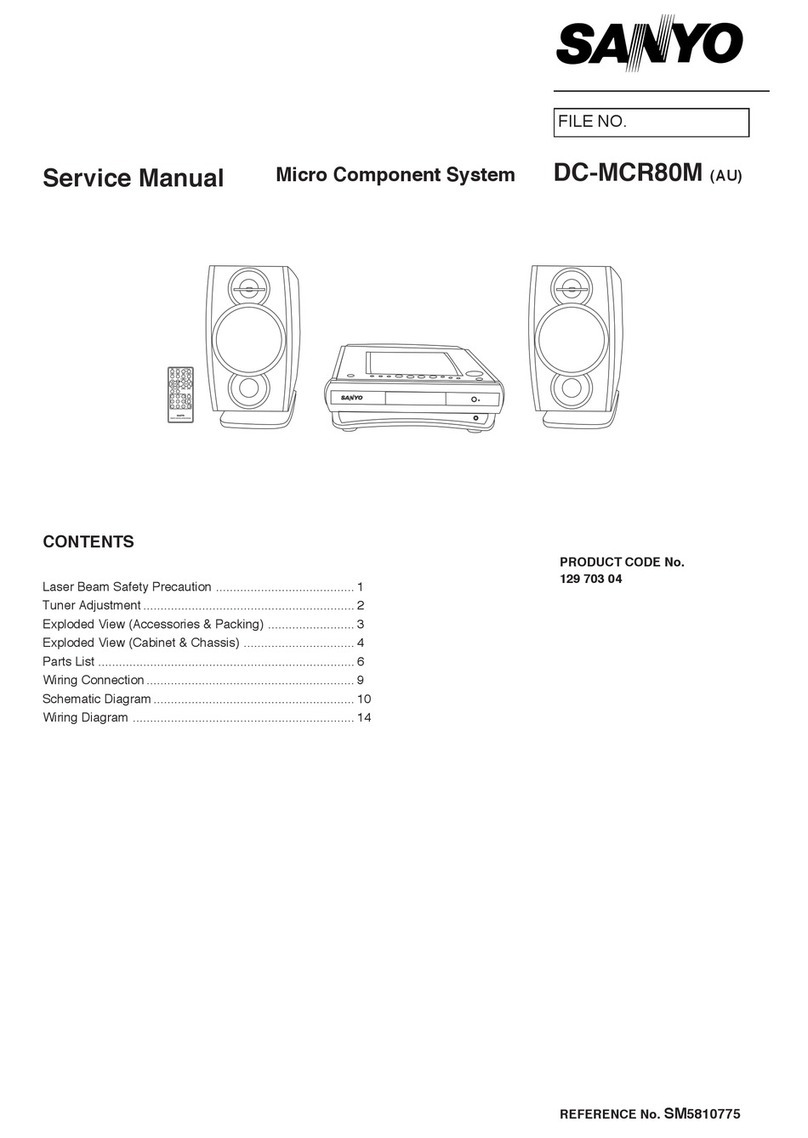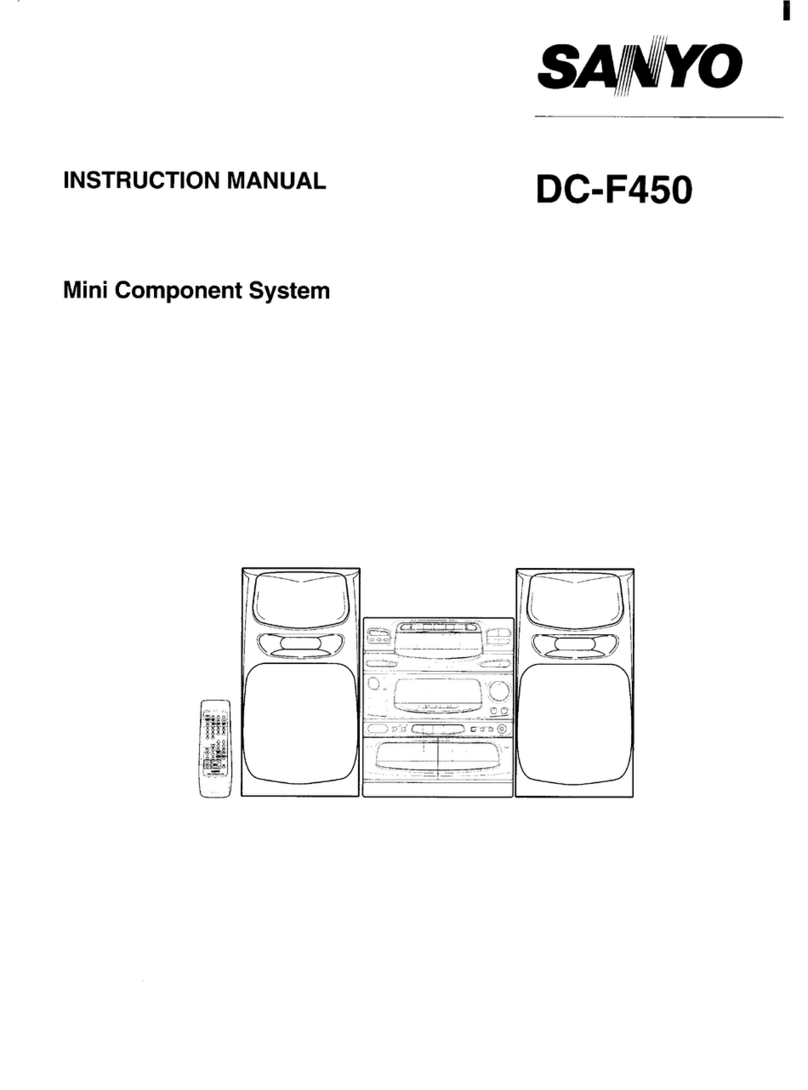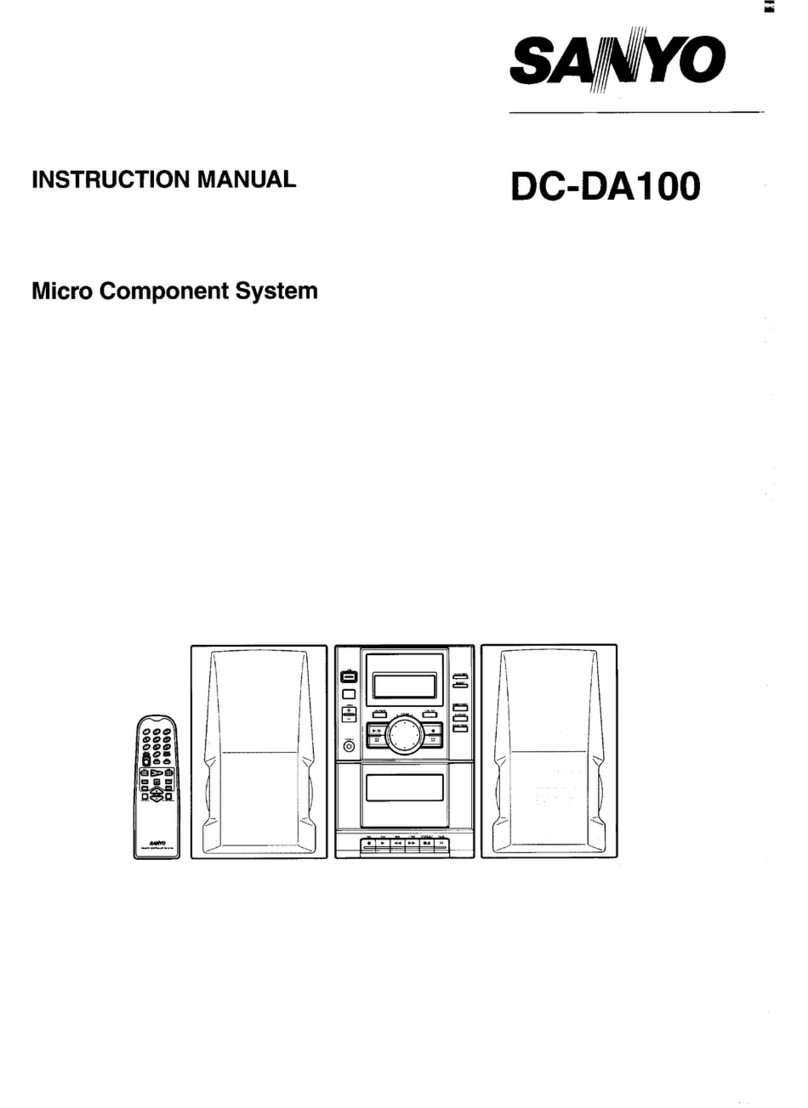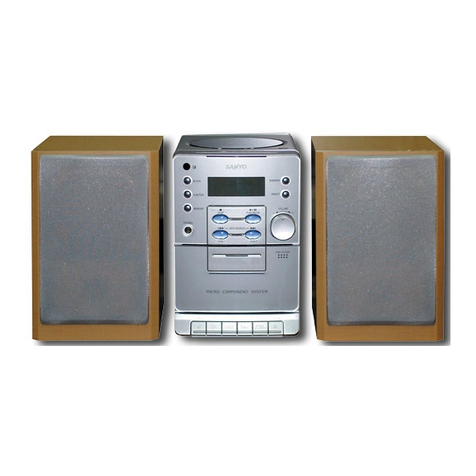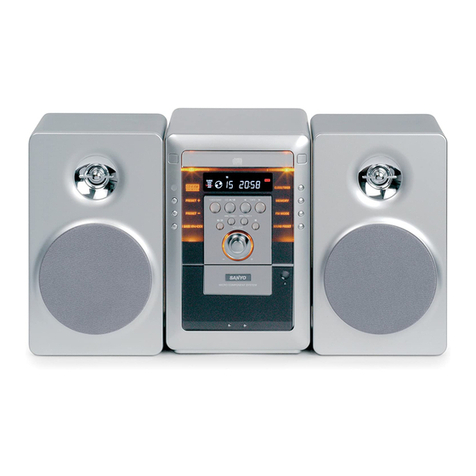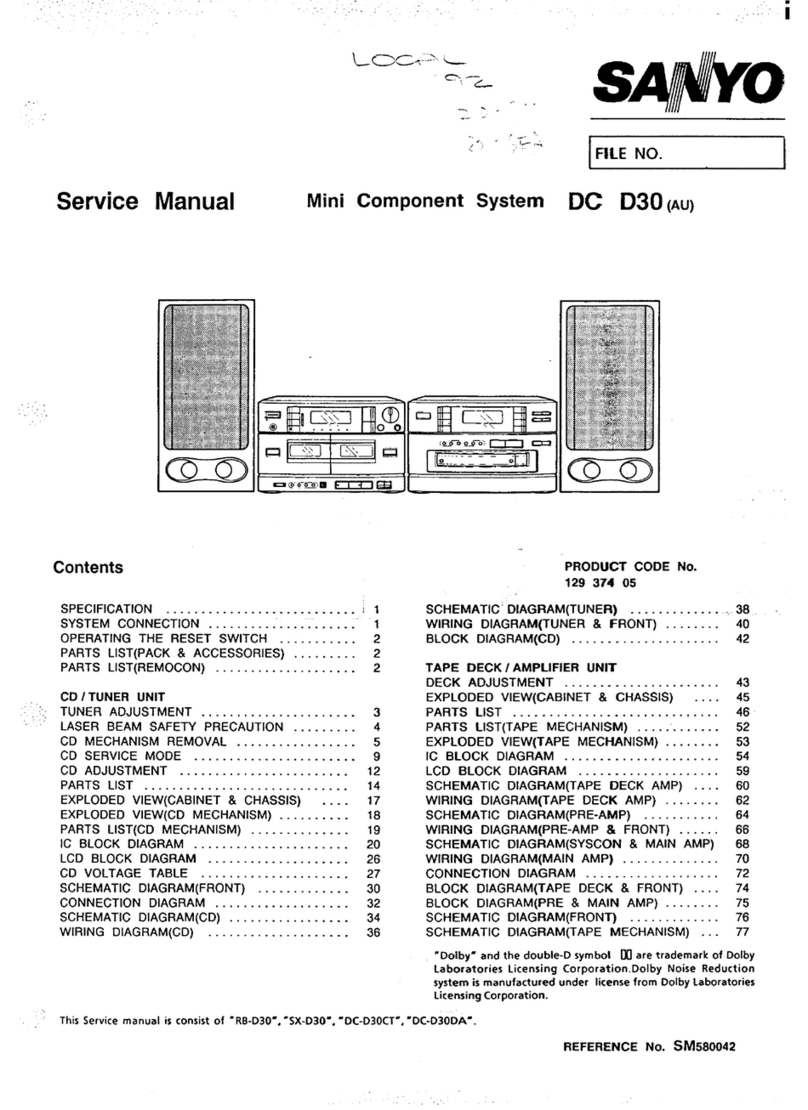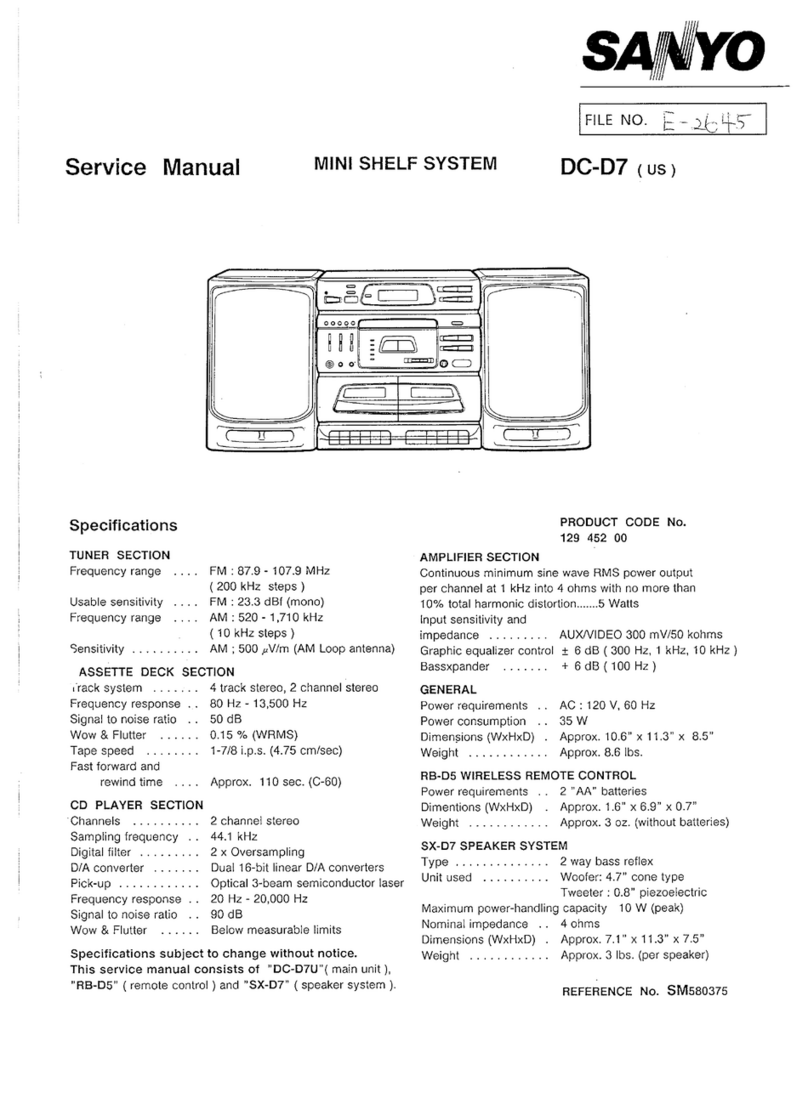.- U
4ANDLING THE PICKUP
b.
,’,
. . .
. . .
1. Shipping and storage cautions
a.
b.
The pickup must be stored in aconductive bag
until immediately prior to its use.
Do not drop it or subject it to impacts.
c.
2.a.
d.
-.— .- .
Repair cautions . .. .. . .
When handling the pickup, be careful not to give it
undue force or shock by your hands. Otherwise the
pickup may malfunction or the PCB may be cracked.
The pickup which has been minutely adjusted before
shipment as one part. Never touch and move the
adjusting points and setscrews of the pickup unless
otherwise described in the item of adjustment to
avoid damage.
BEFORE REPAIRING THE CD PLAYER (CD)—
1.
a.
b.
Astrong magnet is used in the pickup.
Do not bring amagnet or other magnetized object
near to it.
Cleaning the lens
*If dust gets on the lens, clean it away by using an
air brush such as used for acamera lens.
●The lens is held in place by aspring.
If the center of the lens is dirty, carefully clean” it
using cotton swab moistened with isopropylalcohol.
Since special coating is made on the surface of the
lens which is made of plastics, do not use other
kind of alcohol and cleaning fluid to prevent
damage to the lens. Also, be careful not to bend
the lens spring when cleaning. .. ...
.:..
.......
.,.
Preparations
Many ICS, LSI and the Pickup (laser diode) are
used in the compact disc player. These
components are sensitive to static electricity, and
might be damaged by static electricity or high
voltage, so particular care should be taken
regarding this point.
Many precision components and the lens are used in
the pickup.
Never attempt to make repairs, or to store parts,
where the temperature or humidity is high, where
magnetism is strong, or where there is much dust.
2. Notes regarding repairs
a. Be sure to first disconnect the power plug before
attempting to replace any component.
b. All tools, instruments, etc., used for measuring must
be grounded.
Grounding can be accomplished by using a
conductive metal sheet on the work bench.
c. To prevent AV leakage of the soldering iron, ground
its metal part.
d. Repair personnel must be grounded.
!EFORE USE OR TRANSPORTATION
Before use
1. Carefully unpack the unit 3. Remove the sheet and tape which secures the
2. Remove all packing material from around the unit. carousel. ,..
4. Attach the dust Cover.
●-1- -.

